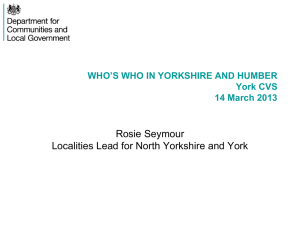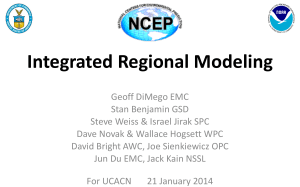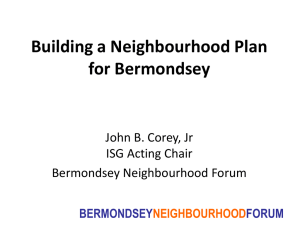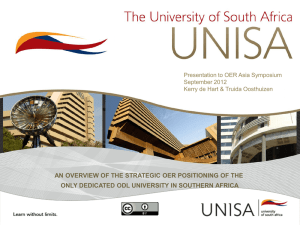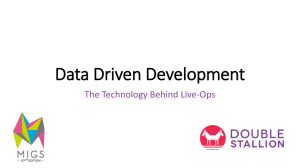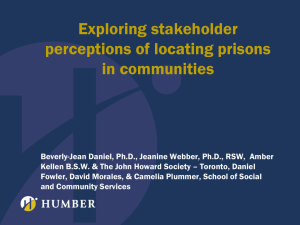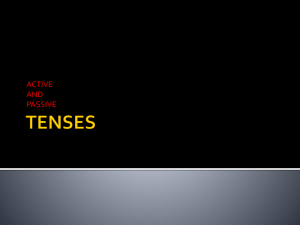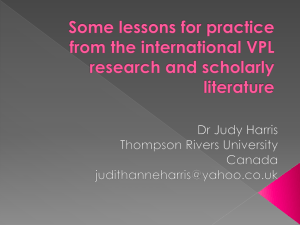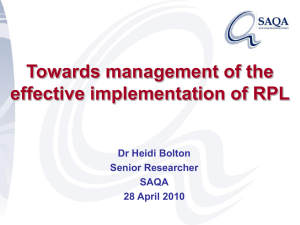Defining the concept of an Energy Positive Neighbourhood
advertisement
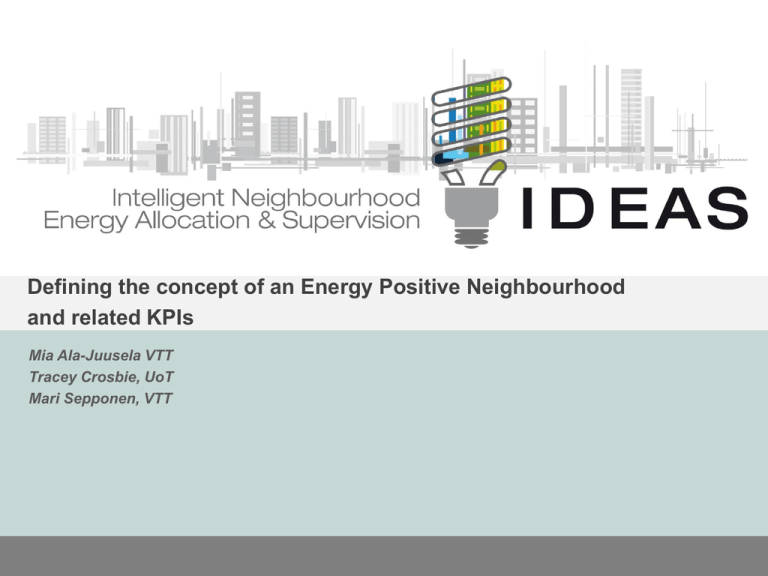
IDEAS Defining the concept of an Energy Positive Neighbourhood and related KPIs Mia Ala-Juusela VTT Tracey Crosbie, UoT Mari Sepponen, VTT IDEAS project IDEAS • The IDEAS project aims to illustrate how communities, public authorities and utility companies across the EU can be engaged in the development and operation of energy positive neighbourhoods (EPN) and the economic and environmental benefits of doing so. • IDEAS will demonstrate how energy positive neighbourhoods can be cost effectively and incrementally implemented by designing, testing and validating: – a neighbourhood energy management tool to optimise energy production and consumption; – user interfaces that engage communities and individuals in the operation of energy positive neighbourhoods; – a decision support urban planning tool to optimise the planning of neighbourhood energy infrastructures; – business models to underpin energy positive neighbourhoods that engage end users, public authorities and utility companies. IDEAS Partners IDEAS Teesside University UK Project Coordinator Technical Research Centre of Finland Centre Scientifique et Technique du Bâtiment, France IBM Israel Science & Technology Ltd Israel Compagnie IBM France SA France NOBATEK France Porvoon kaupunki Finland Porvoon Energia Oy Finland 3 EPN definition by IDEAS consortium • Energy positive neighbourhoods are those in which the annual energy demand is lower than annual energy supply from local renewable energy sources. • Short-term imbalances in energy supply and demand are corrected with national energy supplies. • The aim is to provide – a functional, healthy, user friendly environment – with as low energy demand –and little environmental impact as possible IDEAS Definition by IDEAS consortium, continued IDEAS • Balancing the energy supply from local renewable sources with the energy demand of a neighbourhood will involve maximising energy efficiency and minimising peak power demand while maximising local renewable energy supply and resolving energy storage issues. • To avoid sub–optimisation it is the key that the wider context is considered in the design and operation of energy positive neighbourhoods throughout its entire life cycle. • Energy demand of a neighbourhood includes the energy demand of buildings and other urban infrastructures, such as waste and water management, parks, open spaces and public lighting as well as the energy demand from transport . 1 • Renewable energy includes solar, wind and hydro power, as well as other forms of solar energy, biofuels and heat pumps (ground, rock or water), with the supply facilities placed where it is most efficient and sustainable. Biofuels must be produced within a radius of 100 km from the plant. 1 The energy demand of waste and water management and transport is out of scope of the IDEAS project. Energy positivity label suggested in IDEAS AMRh = XY % MHSh = XY % MHDh = XY % RPLh = XY % AMRc = XY % MHSc = XY % MHDc = XY % RPLc = XY % OER= XYZ % AMRe = XY % MHSe = XY % MHDe = XY % RPLe = XY % IDEAS Legend: OER = On-site Energy Ratio AMR = Annual Mismatch Ratio MHS = Maximum Hourly Surplus MHD = Maximum Hourly Deficit RPL = Monthly Ratio of Peak hourly demand to Lowest hourly demand h = heating c = cooling e = electricity For this neighbourhood, the OER must be > 100 %, because it is an energy positive neighbourhood (A+) A+++ = energy positive neighbourhood with high OER and low (AMR, MHS, MHD & RPL)x A++ = energy positive neighbourhood with high OER A+ = energy positive neighbourhood, OER > 100 % A = zero energy neighbourhood, OER = 100 % B = neighbourhood with low energy demand (passive houses), OER < 100 % C = neighbourhood with lower than average demand D = neighbourhood with standard houses (on average) KPIs for EPN • Overall energy balance is indicated by: – On-site Energy Ratio (OER) • Short term balance is indicated by: – – – – Annual Mismatch Ratio (AMR) Maximum Hourly Surplus (MHS) Maximum Hourly Deficit (MHD) Monthly Ratio of Peak hourly demand to Lowest hourly demand (RPL) • In addition some other KPIs to indicate the other properties than the energy balance IDEAS KPIs for EPN: OER and AMR IDEAS • On-site Energy Ratio (OER), is the ratio between these two: – Annual energy supply from local renewable sources (all energy types together) – Annual energy demand (all energy types together). • Annual Mismatch Ratio (AMR), indicates how much energy is imported into the area for each energy type on average. It is the annual average ratio of these two, for those hours when the local demand exceeds the local renewable supply: – hourly local renewable supply (by energy type) – hourly demand (by energy type) during that same hour KPIs for EPN: MHS, MHD and RPL IDEAS • Maximum Hourly Surplus (MHS) is the maximum yearly value of how much the hourly local renewable supply overrides the demand during one single hour (by energy type) compared to the OER • Maximum Hourly Deficit (MHD) is the maximum yearly value of how much the hourly local demand overrides the local renewable supply during one single hour (by energy type) • Monthly Ratio of Peak hourly demand to Lowest hourly demand (RPL) indicates the magnitude of the peak power demand, and it is calculated as the ratio between these two (by energy type): – The biggest value for hourly demand over the month – The lowest (non-0) value of hourly demand over the month Discussion IDEAS • Reasonable threshold values for the EPN indicators constituting the energy positivity label are yet to be addressed. (Different for different countries?) • The target values for AMR and MHS are also yet to be addressed. (Is surplus of energy production good or bad feature? > Depends on the timing of the production of the surplus energy and/or the ability to store the surplus energy produced locally.) • Relevance of the thresholds further in the future when more EPNs exist, and some with very high OER IDEAS Thank you www.ideasproject.eu info@ideasproject.eu Acknowledgements The IDEAS Collaborative Project (Grant Agreement No. 600071) is co-funded by the European Commission, Information Society and Media Directorate-General, under the Seventh Framework Programme (FP7), Cooperation theme three, “Information and Communication Technologies” 11

